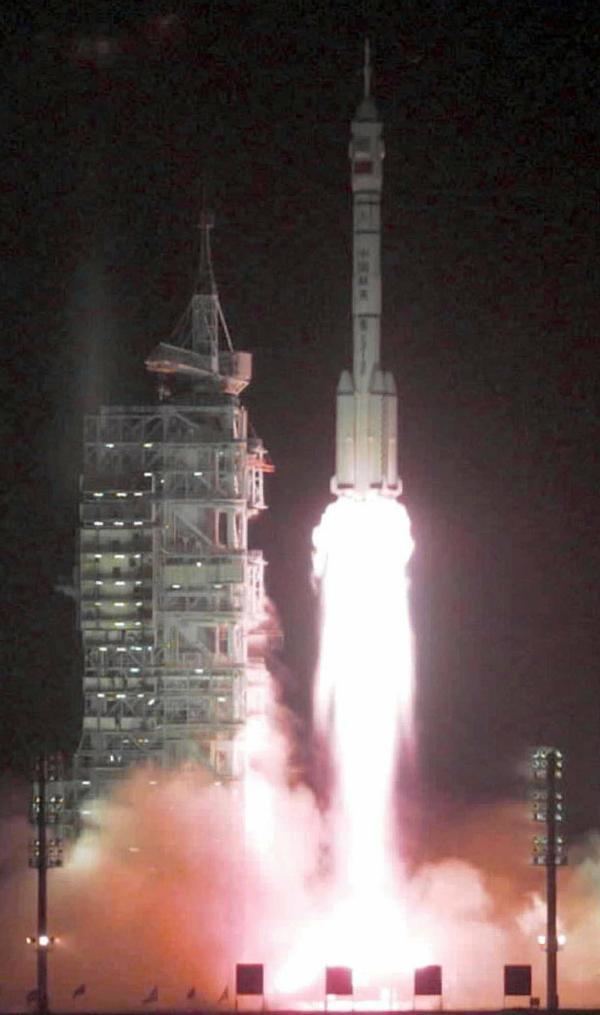Mission type Test flight SATCAT no. 25956 Orbits completed 14 Dates 19 Nov 1999 – 20 Nov 1999 Landing date 20 November 1999 Orbit completed 14 | COSPAR ID 1999-061A Mission duration 21 hours 11 minutes Launch date 19 November 1999 | |
 | ||
Shenzhou 1 4
Shenzhou 1 (simplified Chinese: 神舟一号; traditional Chinese: 神舟一號; pinyin: Shénzhōu Yīhào) launched on November 19, 1999, was the first unmanned launch of the Shenzhou spacecraft. The spacecraft used was not equipped with a life support system or an emergency escape system. After orbiting the Earth 14 times, the command for retrofire was sent by the Yuanwang 3 tracking ship off the coast of Namibia at 18:49 UTC. After a successful reentry it landed about 415 km east of its launch pad and 110 km north-west of Wuhai, Inner Mongolia.
Contents
The first Shenzhou spacecraft was different from those later used. Instead of featuring unfolding solar panels, Shenzhou 1 was equipped with fixed solar cells. During this first flight there were also no orbit changes. According to Qi Faren the chief designer of the spacecraft, only 8 of the 13 sub-systems on board the spacecraft were operational. Shenzhou 1 was designed primarily to test the Long March 2F rocket. The only systems and capabilities tested on the spacecraft were the separation of the modules, attitude control, lifting body reentry, the heat shield, and ground recovery.
The spacecraft is thought to have carried 100 kg of seeds to investigate the effects on them of the space environment. It is also thought that the front of the Orbital Module was equipped with a dummy ELINT package, with Shenzhou 2 onwards equipped with fully functional models.
It was announced in June 1999 that the flight would take place in October of that year. At about the same time images were released on a Chinese military internet forum of the Long March 2F launcher and the Vehicle Assembly Building that would be used. After a reported propellant explosion at the Jiuquan Satellite Launch Center (though the explosion was denied by Chinese officials) the launch was pushed back.
